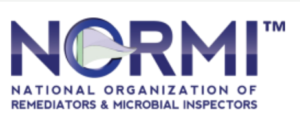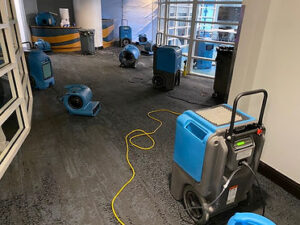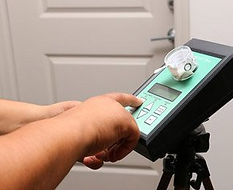Mold Treatment
Mold Treatment
How Does The On the Spot Mold Remediation Process Work?
 As a professional company and a proud member of the NORMI On the Spot’s Certified Mold Remediation Team will first seal off the area in question, as the priority has to be the prevention of cross-contamination. This is much more likely to occur once the removal process has begun, as the mold spores will be disturbed during the cleaning process.
As a professional company and a proud member of the NORMI On the Spot’s Certified Mold Remediation Team will first seal off the area in question, as the priority has to be the prevention of cross-contamination. This is much more likely to occur once the removal process has begun, as the mold spores will be disturbed during the cleaning process.
Once the area has been sealed off our team will then systematically remove and double bag all of the contaminated building materials.  During this process, they will use HEPA scrubbers and negative air machines to filter and clean the air of mold and microbial spores.
During this process, they will use HEPA scrubbers and negative air machines to filter and clean the air of mold and microbial spores.
Obviously, there will be certain areas of the building which cannot be removed such as concrete block walls or slabs, and these will be sanded, HEPA vacuumed, and cleaned using only 100% Eco-Friendly antimicrobial products.
Once the cleaning part of the job has been completed, and the team is satisfied that all of the mold has been removed, they will they apply an EPA approved Indoor Air Quality Encapsulate. This includes a built-in antimicrobial, which seals and protects the structure from future mold-related problems. Once this is all completed an independent licensed mold assessor will perform a PRV clearance test to certify the mold remediation process was successful.
Before you undertake any mold remediation work, it is important that your insurance company is made aware of the problem, and has the opportunity to evaluate the problem before work commences. Failure to provide the insurance company with an opportunity to determine and extent of the problem could fail to pay out. To prevent this our friendly team of customer service advisors at On the Spot are fully knowledgeable in the claims process, and they can and will assist you on the correct procedures to follow. At On the Spot, we work with you to ensure that Mold becomes a historical problem and not one that you will have to face in the future.
A Basic Explanation of Mold and The Problems It Can Cause
Mold is an issue that most homeowners will have to deal with at some point during their lives, and yet the overall understanding and knowledge that the general public has is relatively small compared to numerous issues. In many ways, this is quite surprising given the prevalence of mold in the southeast region of the U.S., and although the intention of this article is not to make you mold experts, we believe it is important to have at least a basic understanding of the problem you may be facing.
Problem 1 – Mold Can Be Anywhere The first issue that needs raising is that unlike many other maintenance problems that occur inside a property, mold is not necessarily going to stick its head out and let you know of its existence. Mold can grow anywhere, and prefers the dark, damp depths of a property, in a lot of situations this may mean areas such as the wall cavity behind showers, where it can remain undiscovered for long periods of time due to slow leaks.
The first issue that needs raising is that unlike many other maintenance problems that occur inside a property, mold is not necessarily going to stick its head out and let you know of its existence. Mold can grow anywhere, and prefers the dark, damp depths of a property, in a lot of situations this may mean areas such as the wall cavity behind showers, where it can remain undiscovered for long periods of time due to slow leaks.
Problem 2 – Mold Can Cause Health Issues If Left Untreated
Has a member of your family recently started to suffer from migraines, coughs or sore throats? Perhaps they have been experiencing breathing problems. Although the correct and proper procedure and advice would be the visit the doctor, it may well be beneficial to have your property tested for mold. These type of illnesses can be caused or exacerbated by mold spores, which are tiny and transported in the air. Professional mold testing can assess the quality of your air, and ascertain if you have a problem long before any physical signs of mold may become apparent.
Problem 3 – How To Identify All of The Issues
In most cases, Mold is not the problem it is the symptom. Mold can only grow when it has food, the correct temperature, and moisture. Without all three of these components, Mold is unable to grow. Subsequently even though in certain situations such as in a bathroom, you may be able to see and remove the mold, by wiping it away, the mold will quickly return as you have not dealt with the underlying problem. Consideration also needs to be given to the types of material stored in the locations where the problem is occurring; Although mold can grow on virtually any surface, it prefers porous and permeable surfaces such as wood, drywall, paper, fiberglass, upholstery, and leather.

